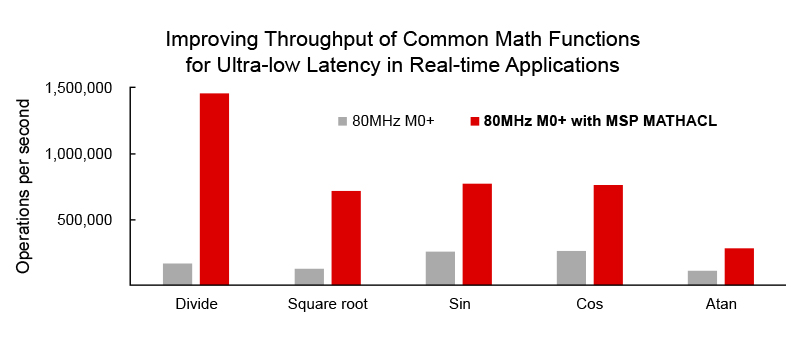SSZT039 march 2023
PRODUCTION DATA
Microcontrollers (MCUs) in embedded systems are the equivalent of air traffic control in a busy airport. MCUs sense their operating environment, take actions based on those observations, and communicate with related systems. They manage and control signals in an almost endless list of electronics, from digital thermometers to smoke detectors to heating, ventilation and air-conditioning motors.
Embedded designers need more flexibility during the design process to maintain a system's affordability and longevity. With currently available MCU portfolios, designers are limited in how much hardware and code they can reuse across current and future designs, and have limited computing, integrated analog and packaging options. This limited flexibility often means that designers must source MCUs from multiple manufacturers and spend additional time reprogramming to meet the unique needs of each design, adding to development costs as well as overall system cost and complexity.
The MSPM0 Arm® Cortex®-M0+ MCUs help solve these challenges by giving designers more options, more design flexibility, and more intuitive software and tools. In this article, I'll explore what “more” really means in these contexts, and the potential applications these MCUs unlock in terms of a wider range of integrated analog options and processing capabilities.
| See MSPM0 MCUs in action at embedded world 2023 | |
| At embedded world in Nuremberg, Germany, March 14-16, visitors to TI's booth can see how MSPM0 MCUs can increase system efficiency and processing and sensing capabilities. See ti.com/embeddedworld for more information. | |
More Computing Options
While the Arm Cortex-M0+ brought 32-bit computing capability to 8- and 16-bit applications, designers are still looking for as much computing performance as possible, including more software abstraction layers to enable code reuse and longevity, the introduction of more analytics into algorithms with ultra-low latency requirements, and the inclusion of more security.
 Figure 1 Graph of common math function
throughput with MSPM0 MCUs
Figure 1 Graph of common math function
throughput with MSPM0 MCUsWith 80 MHz of computing power at two flash wait states, MSPM0 G-series MCUs, like the MSPM0G3507, make it possible to implement low-cost MCUs into applications such as:
- Sensorless field-oriented control (FOC) motor-drive applications running at greater than 30 kHz with lower control loop latency due to math acceleration (example applications shown in Figure 2).
- Polyphase energy metering computation in grid infrastructures.

 Figure 2 Example FOC Motor-drive
Applications (Cordless Power Drill and Home Appliances)
Figure 2 Example FOC Motor-drive
Applications (Cordless Power Drill and Home Appliances)More Integrated Analog
Leveraging the MSPM0 MCUs' integrated building blocks with flexible, programmable on-chip connections – including successive approximation register (SAR) analog-to-digital converters (ADCs), comparators and digital-to-analog converters – can help improve the accuracy of sensing circuits. These building blocks also include zero-drift, chopper-stabilized, programmable-gain operational amplifiers with zero crossover distortion. Integrated transimpedance amplifiers have ultra-low input bias current (150 pA) for implementing photodiode circuits.
- Power delivery applications such as battery charging and gauging.
- Monitoring and real-time control applications such as brushed DC and brushless DC motor drives in appliances and power and garden tools.
- Medical monitoring signal chains including blood pressure monitors, pulse oximeters and thermometers
- Building automation applications including smoke detectors and passive infrared sensors, as shown in this demonstration video: Smoke Detector
The integrated SAR ADC supports monotonic 12-bit operation at up to 4 MSPS and 14-bit operation at up to 250 kSPS, with available simultaneous sampling for the synchronized measurement of two signals. This functionality enables energy monitoring in residential and enterprise applications, with simultaneous 14-bit sampling of mains voltage and current, and high-speed low-latency sampling (250 ns) in motor drives such as compressors, pumps and fans.
Conclusion
Adding and improving features in cost-sensitive embedded systems is limited by the sensing accuracy and computing capabilities of the MCUs that fit a designer's budget. And as more designers take a platform software development approach, applying one software framework across many applications, it's more important than ever to develop on top of a portfolio of MCUs with scalable features in order to ensure that every product uses the most cost-optimized MCU with the necessary sensing and processing features. With modern MCU portfolios, designers can add new features without adding cost – or keep the feature set they have and reduce cost – while also developing scalable software that can be reused in future designs.
Additional Resources:
Read our series application briefs on how MSPM0 MCUs streamline designs in a range of applications:
- Optimizing Field Sensor and Transmitter Applications With MSPM0 MCUs
- BLDC/PMSM Control Using Sensorless FOC Algorithm Based on MSPM0 MCUs
- Increasing Flexibility in Your Battery Management Designs With a Low-Cost MSPM0 MCUs
- Build Scalability in Cordless Power and Garden Tools Using Low-Cost MSPM0 MCUs
- Designing Single- and Three-Axis Selfie Sticks With MSPM0 MCUs